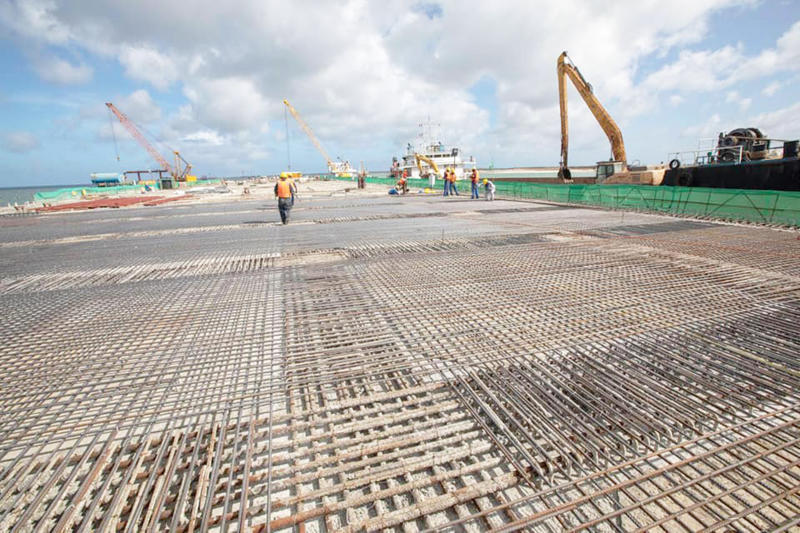It is nearly universally accepted that good infrastructure has significant benefits for the economy and peoples’ quality of life. Kenya currently has a predicted annual infrastructure spend of US$6.5bn a year by 2030.
However, we have a significant problem. According to Mace’s new report, up to 80% of large infrastructure projects are delivered late and over-budget – and then under-deliver on benefits.
This has a substantial cost to taxpayers. Modelling done by Mace, the consultancy and construction company behind iconic projects such as the London 2012 Olympics, and Dubai Expo 2020 along with Kenya projects such as the Garden City development in Nairobi, shows that if major projects continue to experience issues at the rate they do now, taxpayers will be faced with an unexpected bill of KSh 200bn every year by 2030.
The new Mace Insights report released today, A blueprint for modern infrastructure delivery¸ looks at the main reasons why so many large projects go wrong and what we can do to put it right. Nearly 40 senior executives from around the world were interviewed for the breakthrough report alongside a review of latest academic literature and new modelling.
Some of the main issues identified include:
- Lack of clarity of outcome when deciding on which schemes to take forward. Often decisions are driven by political pressure rather than rigorous cost and benefit analysis.
- The poor predictive abilities of project teams in their early stages, who are pressured into providing fixed point price estimates and programmes well before accurate predictions are possible or realistic.
- Procurements based on ‘cheapest price’ rather than ‘value’. On large and complex projects, cheapest price procurement is a false economy.
In Kenya, MaceYMR delivers project / programme management and cost consultancy for some of the country’s largest and most high-profile developers. Completed and current projects include the Two Rivers Mall Nairobi, the Acacia Mall in Kampala, the new City Lodge Hotel in Dar and Kigali’s new I&M Bank Headquarters building.
Drawn from the report, our top solutions for addressing concerns with Kenyan infrastructure are:
- Create a Department for Growth
In many countries around the world, the political responsibility for planning, business regulation, housing and transport are separate. This means that when a mega infrastructure project comes along it cuts across multiple policy areas with a very wide range of stakeholders. Bringing the relevant elements together into a coherent single government department would improve decision-making and efficiency.
- Create an independent scrutiny panel
If your project or programme is large enough, or you are a government agency with many large projects, you should create a panel of industry ‘heavyweights’ outside normal public sector structures to challenge the project scope, timescales and costs. Their sole role should be rigorous challenge. This independent scrutiny panel needs to have the teeth and executive support to get the information they need for proper challenge. The London 2012 Olympics and the Hong Kong Aviation Authority both took this approach. Governments may choose to use this panel to challenge their top 10, 20 or 50 projects at regular intervals.
- Training academy for project ‘sponsors’ and leaders
Many large infrastructure owners are public bodies who can struggle to attract the right calibre of people to work for them due to pay constraints. Hence it makes sense to provide high-quality practical training to current government employees to try and upskill them and enhance their skills. A particular focus should be given to the understanding of probability and risk and what that means to a project alongside how to hone in on a clear outcome for a project to achieve.
Simon Herd, MaceYMR’s Director for Kenya, said:
“The delivery of infrastructure in Kenya is key to continue to enable economic growth across the country. As population pressures on our urban centres grow, we must keep pace with our infrastructure delivery.
“The Government rightly has ambitious plans for huge infrastructure programmes across the country, but if we can’t deliver them effectively we risk huge costs for Kenyan taxpayers.”
Jason Millett, Chief Operating Officer for Consultancy at Mace said:
“According to our calculations, unless something changes, Kenyan taxpayers will be stung with an unexpected bill of KSh 200bn a year by 2030.
“Sadly, many large infrastructure projects do not have the right measures in place to properly plan, develop and deliver these vital schemes. This leads to cost increases, delays in completion and under delivering on the benefits they promised.

